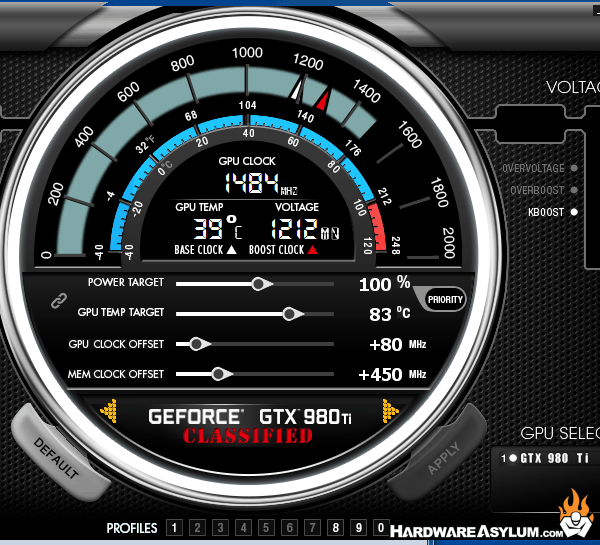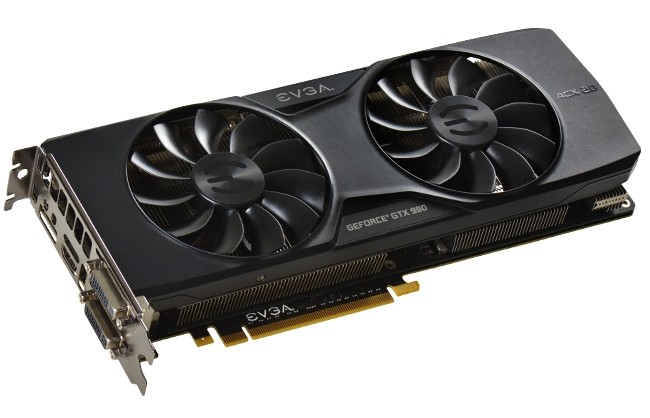
I'm fairly sure that this card could clock more on the 1.2v boost voltages, but I simply want to elongate the time this graphics card survives. For all I know the GTX 275 wasnt correctly used. I havent compared these scores to anything else, so I'm not sure how good they are in comparison to yours or others. the lowest being 0.013v, the midrange being 0.025v, and the highest is 0.038v. The overvoltage option in Precision has three options for voltage. I however did need to give the card a bit of a kick to 1.175v for a clock of 1030mhz and 7Ghz memory clocks.

Many reviewers never had to adjust this overvoltage, as they could achieve 1050mhz core on 106% voltage (which is 1.162v by the way). Not only is there the Power target option, there is also Overvoltage, which admittedly I did not spot quite so early into overclocking. I've not yet gone above 71 degrees with my fan profile, so the Temperature Target has never really kicked in for me, but for those that opt for silent operation, this may come in handy for you. It will knock down the boost clock and voltage until it is within acceptable temperature margins. Whatever we set this is, is the temperature at which the card will throttle itself when it gets that hot, to prevent any damage to the card. This is where we look back at that Temperature Target we saw earlier. Most reviewers set the Power Target to max, which is 106%, and then the Temp target which we can get to later. Base clock is 863mhz, so we'll need + 137mhz for 1Ghz. Let's say for stock votlage we'll roll with 1Ghz on the core, which is nice in itself. You can do this on the Mem Clock Offset slider.

Now my main aim was 7Ghz memory, so from 1502, I needed +248mhz on the memory to bring it to 1750 (times four is 7Ghz). I then set out to create a stable overclock, which you can see in my system specs is:īut let's say you want to start at big round numbers, which is what I did. At first it was a little confusing, I didnt quite know how the advanced options worked as it looked a little different, so I spent about 3 hours doing research on specifically overclocking NVidia cards. So I decided to use what a lot of the reviewers used, EVGA Precision, which has the same backbone as Afterburner. Needless to say i got consistent display adapter crashes, and I was getting pretty frustrated. When my 780 arrived, I immediately set the clock for what was around 1ghz and memory for 7Ghz effective, and then messed around with the poor voltage options in AB. Usually I use MSI Afterburner, and have done since I started overclocking. Before it even arrived, I was checking out reviews and forums for the overclock, and immediately knew I wanted to get 7Ghz effective on the memory, and then clock the core from there.

So as some of you know I bought a GTX 780 within 10 minutes of the release.


 0 kommentar(er)
0 kommentar(er)
